Contents
- 15th G20 Leaders Summit
- Water Conservation
- RuPay card
- Rani Lakshmibai
- Mission Purvodaya
- Spirulina
- Plasma Blobs
- REINVEST- 2020
- World Toilet Day
- Safaimitra Suraksha Challenge
- Input Tax Credit
- New Development Bank(NDB)
- International Energy Agency
- CLAWS
- LAND MANAGEMENT SYSTEM (LMS)
15th G20 LEADERS SUMMIT
Focus: GS 2;Bilateral, regional and global groupings and agreements involving India and/or affecting India’s interests.
Why in News?
At the invitation of His Majesty King Salman bin Abdulaziz Al Saud, Custodian of the Two Holy Mosques, Kingdom of Saudi Arabia, Prime Minister Shri Narendra Modi will be attending the 15th G20 Summit chaired by the Kingdom of Saudi Arabia, under the theme “Realising the Opportunities of 21st Century for All” on 21-22 November 2020.
The meeting will be held in a virtual format.

Please Click of this and Refer PIB 22nd Oct 2020 for detailed explanation about G20 Countries
WATER CONSERVATION
Focus: GS 3; Conservation, environmental pollution and degradation, environmental impact assessment.
Why in News?
Vice President calls for a nationwide campaign on water conservation
About Water Conservation
- The Water conservation includes all the policies, strategies and activities to sustainably manage the natural resource of fresh water, to protect the hydrosphere, and to meet the current and future human demand.
- The Population, household size and growth and affluence all affect how much water is used.

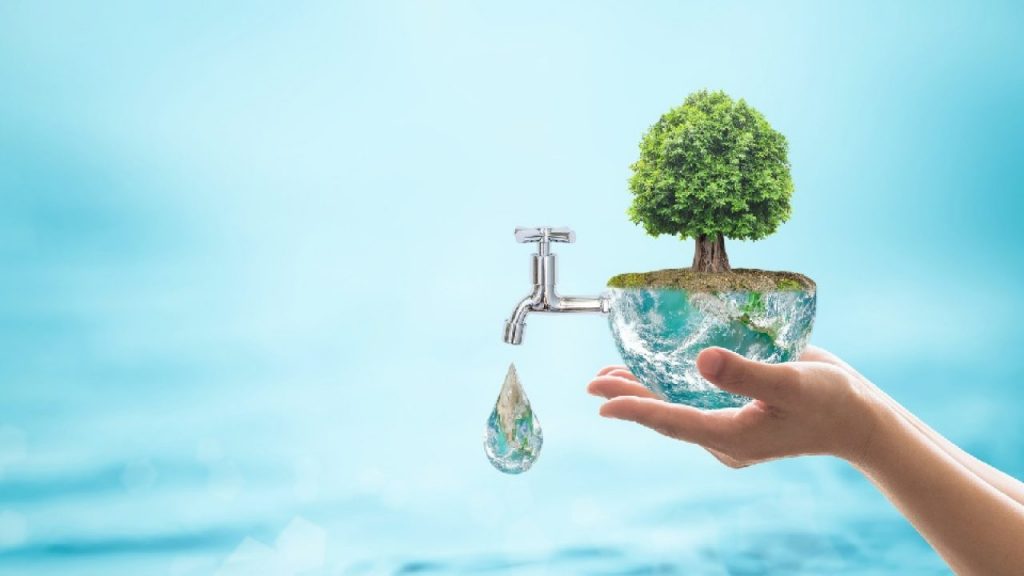
Importance of Water Conservation and Policies
- The importance of water conservation and policies explained in the below attached image

- To start, we all use water for drinking, washing, cleaning, cooking, and growing food making it our most precious resource for survival, what adds to that daily household water use, is that even more water is used by industry to generate electricity, manufacture products, and transport people and goods, as shown in the below image how to use Water smartly.

History of Water Conservation in India
- The history of water conservation in india explained in the below attached image.

The Traditional Water Conservation Methods in India
- The Water conservation is a key element of any strategy that aims to alleviate the water scarcity crisis in India, with rainfall patterns changing almost every year, the Indian government has started looking at means to revive the traditional systems of water harvesting in the country.
- The traditional methods are simple and eco-friendly for the most part, they are not just highly effective for the people who rely on them but they are also good for the environment, some of the traditional methods shown in the below attached image’s.


- Below image’s shows the water situation and ground water too in Indian states.

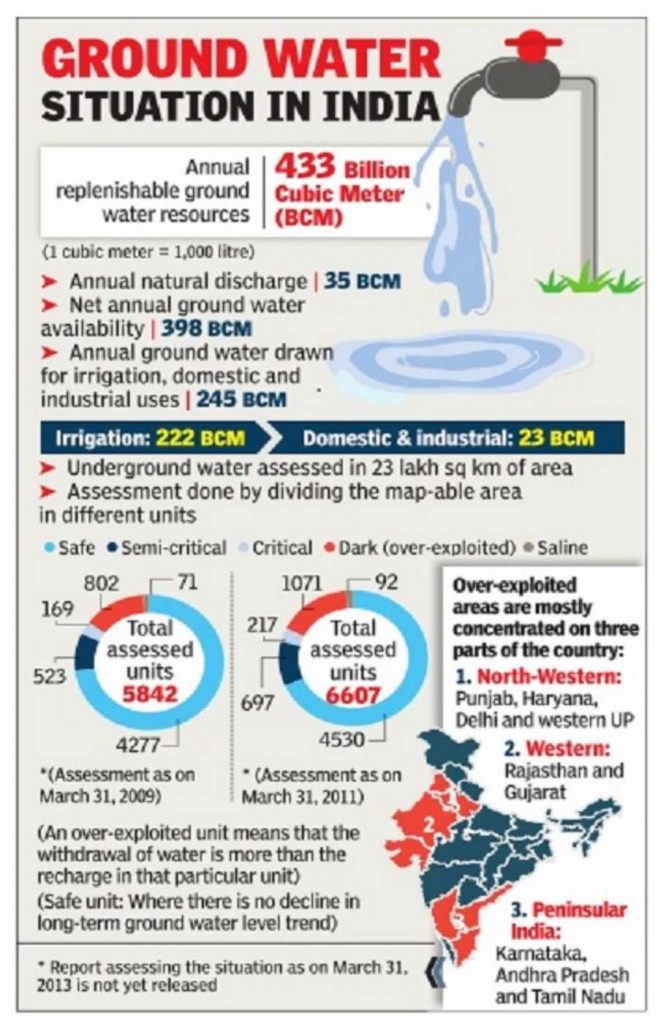
Government Indicatives for water conservation in India
- The Government of India has approved Atal Bhujal Yojana (Atal Jal), a Rs. 6000 Crore Central Sector Scheme, for sustainable management of ground water resources with community participation in water stressed blocks of Gujarat, Haryana, Karnataka, Madhya Pradesh, Maharashtra, Rajasthan and Uttar Pradesh.

- The Jal Jeevan Mission, is envisioned to provide safe and adequate drinking water through individual household tap connections by 2024 to all households in rural India.

- The National Water Policy is formulated by the Ministry of Water Resources of the Government of India to govern the planning and development of water resources and their optimum utilization.
- Below image shows the some major water battles between states regarding its usage and control.

Way Forward
- The water is a major valuable resources not only for humans but for whole earth be it plants, animals , microorganism etc.,
- As in one of the UN Sustainable Dvelopment Goals also pledged to save water i.e. SDG 6 Clean water and Sanitation and india wants to achieve it through various initiatives.
- The future of India’s environment lies in its cities. As India rapidly urbanizes, cities will be at the forefront both for India’s growth and for sustainability.
- For cities to break away from the current vicious loop of flooding and water scarcity, nature-based solutions like restoration of urban watersheds and wetlands could offer solutions.
- The water conservation is the need of the hour and it is the basis for the human life to survive.

- If water is not conserved properly the future situation will be like as shown in the below image.

Ru-PAY CARD
Focus: GS 3; Indian Economy and issues relating to planning, mobilization, of resources, growth, development and employment.
Why in News?
Virtual ceremony for the launch of RuPay card Phase-II in Bhutan
About Ru-Pay Card
- The RuPay is a domestic card payment service conceived and launched by the National Payments Corporation of India (NPCI) on 26 March 2012.
- It was created to fulfil the Reserve Banks of India (RBI) vision of establishing a domestic, open and multilateral system of payments.

- The RuPay facilitates electronic payment at all Indian banks and financial institutions.
- The NPCI maintains ties with Discover Financial, JCB to enable RuPay card scheme gain international acceptance.
- In India, 90% of credit card transactions and almost all debit card transactions are domestic, however, the cost per transaction was low with RuPay compared to foreign card schemes.
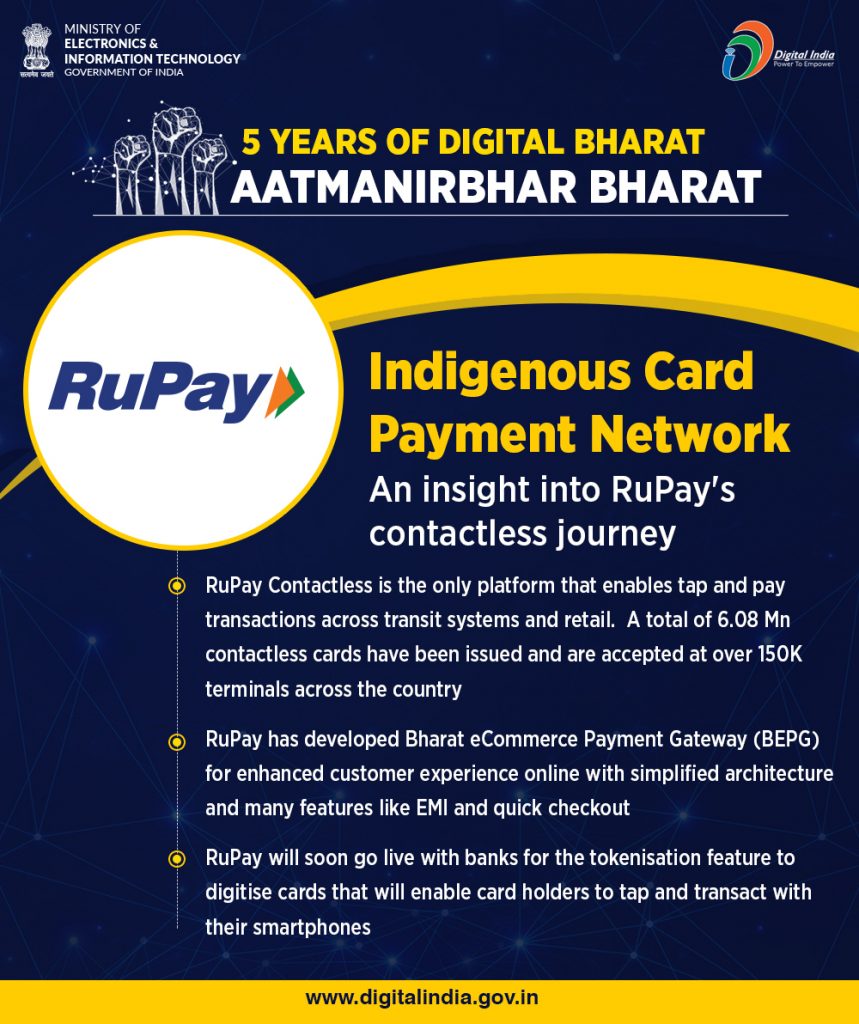
- The Ru-Pay Card advantages as explained in the below image.


Extra Info
About National Payments Corporation Of India (NPCI)
- The National Payments Corporation of India (NPCI) is an umbrella organisation for operating retail payments and settlement systems in India.
- It founded in 2008, the NPCI is a not-for-profit organisation registered under Section 8 of the Companies Act 2013, established by the Reserve Bank of India (RBI) and Indian Banks Association (IBA).
- The organisation is owned by a consortium of major banks, and has been promoted by the country’s central bank, the Reserve Bank of India.
- The NPCI was incorporated in December 2008 and the Certificate of Commencement of Business was issued in April 2009.
![National Payments Corporation of
India
NPCI'
Industry
d
SZion 8
2C08: 12
Mumlf. Indiam
Key Ropie
(MD & CEO)131141
Ensiled
Syste m
Syste m
Syste m
• Immediate
Clew-ing
"'Oility
Fir* real Switch
Nuup seviæs
We b site
org]n$](https://www.legacyias.com/wp-content/uploads/2020/11/image-116.png)
RANI LAKSHMIBAI
Focus: GS 1;Modern Indian history from about the middle of the eighteenth century until the present significant events, personalities, issues.
Why in News?
PM pays tributes to Rani Lakshmibai on her Jayanti
About Rani Lakshmibai
- The Lakshmibai, the Rani of Jhansi, was an Indian queen of the Maratha princely state of Jhansi in North India currently present in Jhansi district in Uttar Pradesh, India.

- She was one of the leading figures of the Indian Rebellion of 1857 and became a symbol of resistance to the British Raj for Indian nationalists.
- When Growing up with Nana Sahib and Tatya Tope, she got training in martial arts, sword fighting and horse riding and became proficient in them. She was more independent than other girls of her age, due to her unconventional upbringing.
- The Rani Lakshmibai was one of the brave warriors of India’s struggle for Independence.
- In 1853, when the Maharaja of Jhansi died, the East India Company took advantage of the situation and applied the Doctrine of Lapse to annex Jhansi.
- The Lakshmibai fought bravely against the British and gave a tough fight to Sir Hugh Rose so as to save her empire from annexation. She died fighting on the battlefield on June 17, 1858.
- When the Indian National Army started its first female unit (in 1943), it was named after the valiant queen of Jhansi.
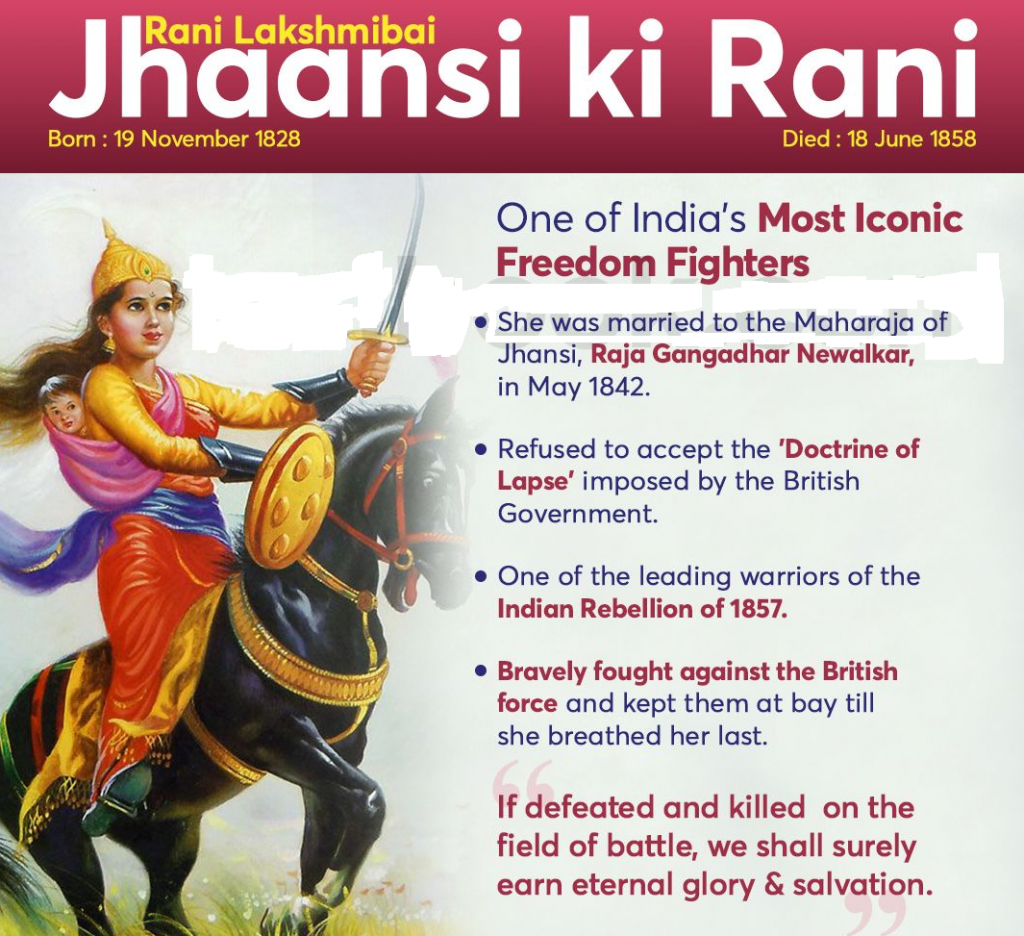
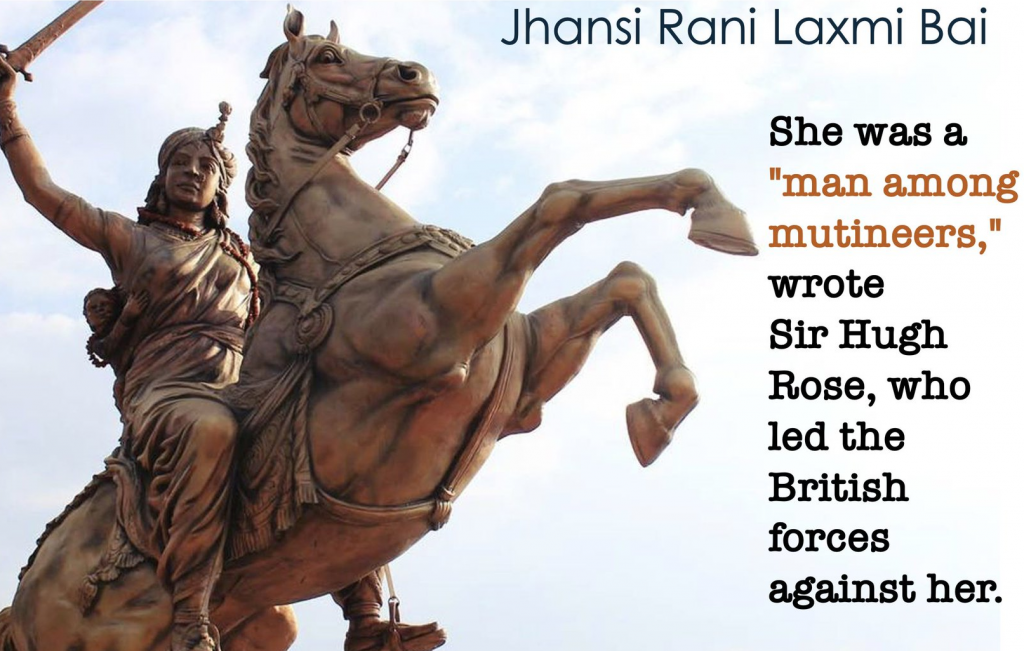
Extra Info
About Doctrine of Lapse
- It was an annexation policy followed widely by Lord Dalhousie when he was India’s Governor-General from 1848 to 1856.

- According to this, any princely state that was under the direct or indirect control of the East India Company where the ruler did not have a legal male heir would be annexed by the company.
- As per this, any adopted son of the Indian ruler could not be proclaimed as heir to the kingdom.
- By applying the doctrine of lapse, Dalhousie annexed the States of:
- Satara (1848 A.D.),
- Jaitpur, and Sambalpur (1849 A.D.),
- Baghat (1850 A.D.),
- Udaipur (1852 A.D.),
- Jhansi (1853 A.D.), and
- Nagpur (1854 A.D.)
MISSION PURVODAYA
Focus: GS 3;Infrastructure: Energy, Ports, Roads, Airports, Railways etc.
Why in News?
Mission Purvodaya will drive eastern India towards self-reliance and contribute to making of an Aatmanirbhar Bharat, says Shri Dharmendra Pradhan at AGM of Merchants Chamber of Commerce and Industry
About Mission Purvodaya
- It was launched in 2020 for the accelerated development of eastern India through the establishment of an integrated steel hub in Kolkata, West Bengal.
- The focus will be on eastern states of India (Odisha, Jharkhand, Chhattisgarh, West Bengal) and northern part of Andhra Pradesh which collectively hold ~80% of the country’s iron ore, ~100% of coking coal and significant portion of chromite, bauxite and dolomite reserves.
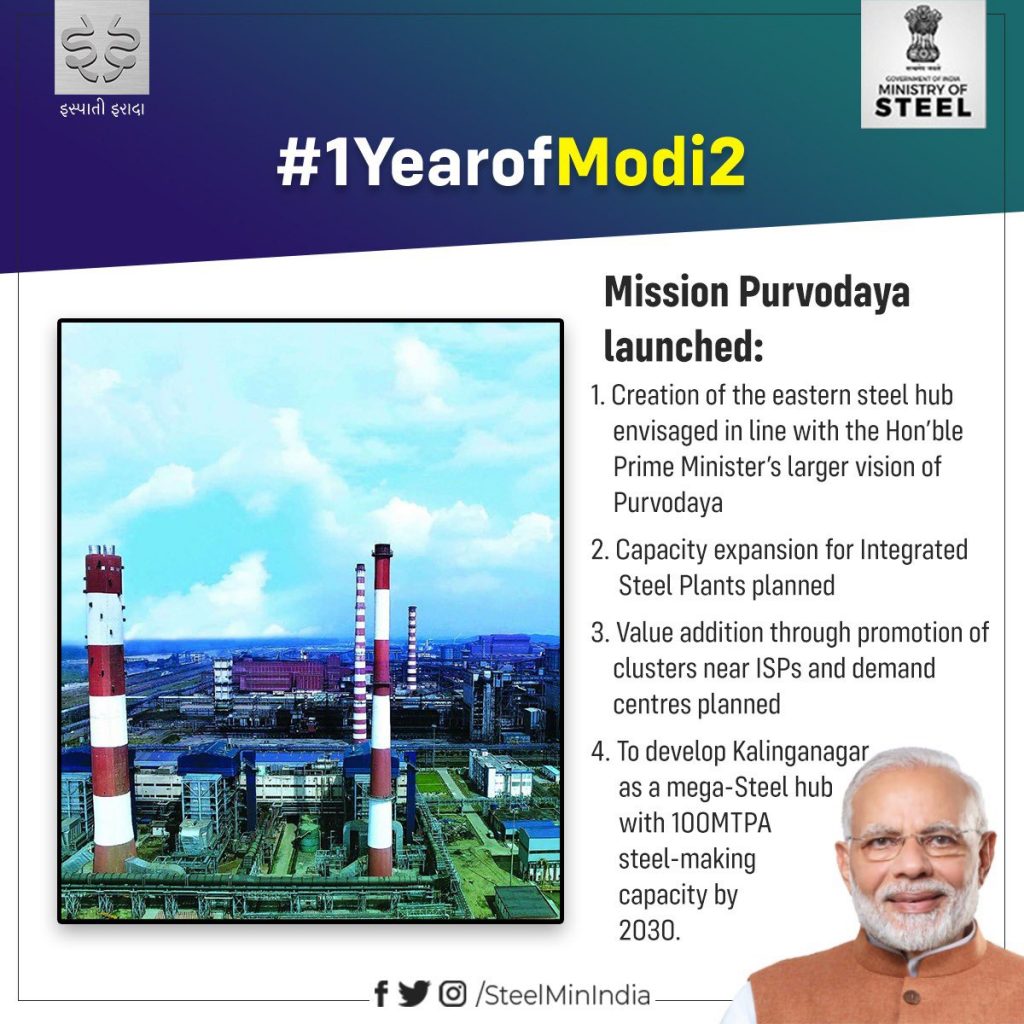
- The Integrated Steel Hub would focus on 3 key elements as follows:
- Capacity addition through easing the setup of Greenfield steel plants.
- Development of steel clusters near integrated steel plants as well as demand centres.
- Transformation of logistics and utilities infrastructure which would change the socio-economic landscape in the East.
- The objective of this hub would be to enable swift capacity addition and improve overall competitiveness of steel producers both in terms of cost and quality.

- The Steel is a product of large and technologically complex industry having strong forward and backward linkages in terms of material flows and income generation. It is also one of the most important products of the modern world and of strategic importance to any industrial nation.
- About the National Steel Policy 2017 as explained in the below images its features etc.,

- The policy projects crude steel capacity of 300 million tonnes (MT), production of 255 MT and a robust finished steel per capita consumption of 158 Kgs by 2030-31, as against the current consumption of 61 Kgs.

SPIRULINA
Focus: GS 3; Science and Technology- developments and their applications and effects in everyday life.
Why in News?
Smart injectable hydrogel from spirulina can help rapid recovery in internal injuries and in diabetic patients: INST Scientists
About Spirulina
- The Spirulina is an organism that grows in both fresh and saltwater.

- It is a type of cyanobacteria, which is a family of single-celled microbes that are often referred to as blue-green algae.
- It is used as a dietary supplement or whole food.

- It is also used as a feed supplement in the aquaculture, aquarium, and poultry industries.
- Just like plants, cyanobacteria can produce energy from sunlight via a process called photosynthesis.
- In the below image shows the health benefits of spirulina.

- Below are the few disadvantages of Spirulina they are as follows
- Heavy metals
- Phenylketonuria characterized by which deficiency in the enzyme that metabolizes phenylalanine.
- Drug Interaction
- Worsening of Auto Immune Disease.
- As they are rich in chlorophyll which are not advised for human consumption.
- There is a lot of risk of contamination during growth
PLASMA BLOBS
Focus: GS 3; Science and Technology- developments and their applications and effects in everyday life.
Why in News?
Solar Physicist’s study of plasma blobs after biggest solar flare of the decade could shed light on mechanism of such flares
About Blob in Physics
- In magnetic confinement devices for fusion , a large fraction of plasma particles and energy is efficiently transported across a confining magnetic field in the form of blobs .
- These are coherent structures of enhanced plasma pressure relative to the background plasma, which have a filamentary structure, as they typically extend much further along the magnetic field than perpendicular to it.
- The Blobs are universally observed in the edge of virtually all magnetized laboratory plasmas.

Above image of A Twisting Blob of Plasma, A twisted blob of solar material a hot, charged gas called plasma can be seen erupting off the side of the sun.
REINVEST- 2020
Focus: GS 3;Infrastructure: Energy, Ports, Roads, Airports, Railways etc.
Why in News?
The Prime Minister Shri Narendra Modi will inaugurate the virtual 3rd Global Renewable Energy Investment Meeting and Expo (RE-INVEST 2020).
About 3rd Global Renewable Energy Investment Meeting and Expo (RE-INVEST 2020)
- The 3rd Global RE-INVEST Renewable Energy Investors Meet & Expo, organised by the Ministry of New and Renewable Energy (MNRE) Government of India, will be held from 26 – 28 November 2020 on a Virtual Platform.

- The RE-INVEST 2020, themed ‘Innovations for Sustainable Energy Transition’ aims to accelerate the worldwide effort to scale up development and deployment of renewable energy and connect the global investment community with Indian energy stakeholders.
- It will feature a 3-day conference on renewables and future energy choices, and an exhibition of manufacturers, developers, investors and innovators.
- The RE-INVEST 2020 is expected to be attended by over 75 international Ministerial delegations, over 1000 global industry leaders, and 50,000 delegates.

- The Minister also stated that the Government had taken a number of facilitative policy measures to ensure “ease of doing business” for renewable energy in the country, and to address any emergent challenges. RE-INVEST is also an step in this ongoing process which will inform about the Government’s plans and programmes and also foster engagement among industry, investors and other stakeholders to take forward India’s renewable growth story.
Extra Info
About PM – KUSUM Scheme
- The PM–KUSUM scheme was launched by the Ministry of New and Renewable Energy (MNRE) to support installation of off-grid solar pumps in rural areas and reduce dependence on grid, in grid-connected areas.
- It entails setting up of 25,750 MW solar capacity by 2022 with a total central financial support of Rs 34,422 crore.

WORLD TOILET DAY
Focus: GS 3;Conservation, environmental pollution and degradation, environmental impact assessment.
Why in News?
Jal Shakti Ministry celebrates World Toilet Day with Union Minister conferring Swachhata Awards on 20 best performing Districts and holding Sarpanch Samvad with Nine Sarpanches.
About World Toilet day
- The “World Toilet Day celebrates toilets and raises awareness of the 4.2 billion people living without access to safely managed sanitation and is about taking action to tackle the global sanitation crisis and achieve Sustainable Development Goal 6 water and sanitation for all by 2030,” the UN website says.

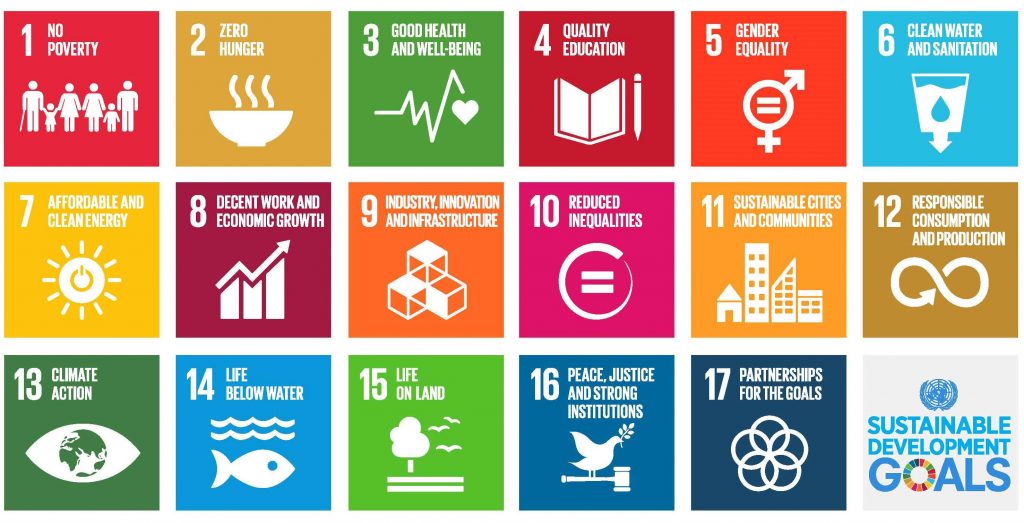
Above image of SDG Goals set by UN from 2015 to 2030
SAFAIMITRA SURAKSHA CHALLENGE
Focus: GS 3;Conservation, environmental pollution and degradation, environmental impact assessment.
Why in News?
Shri Hardeep Singh Puri, MoS, I/C, Housing and Urban Affairs today stated that Government of India is committed to ensure that no person needs to enter a sewer or septic tank, unless absolutely unavoidable in the interest of greater public hygiene. Launching the Safaimitra Suraksha Challenge at a webinar in New Delhi.
About Safaimitra Suraksha Challenge
- The India still continues to witness over hundred deaths per year due to manual scavenging.
- The initiative is in line with PM Modi’s vision, who has always placed the safety and dignity of sanitation workers at the core of the Swachh Bharat Mission-Urban (SBM-U).
- The Prohibition of Employment as Manual Scavengers and their Rehabilitation Act (2013) and various judgements of Hon’ble Supreme Court expressly prohibit hazardous cleaning, i.e. manual entry into a septic tank or sewer without protective gear and observing operating procedures.
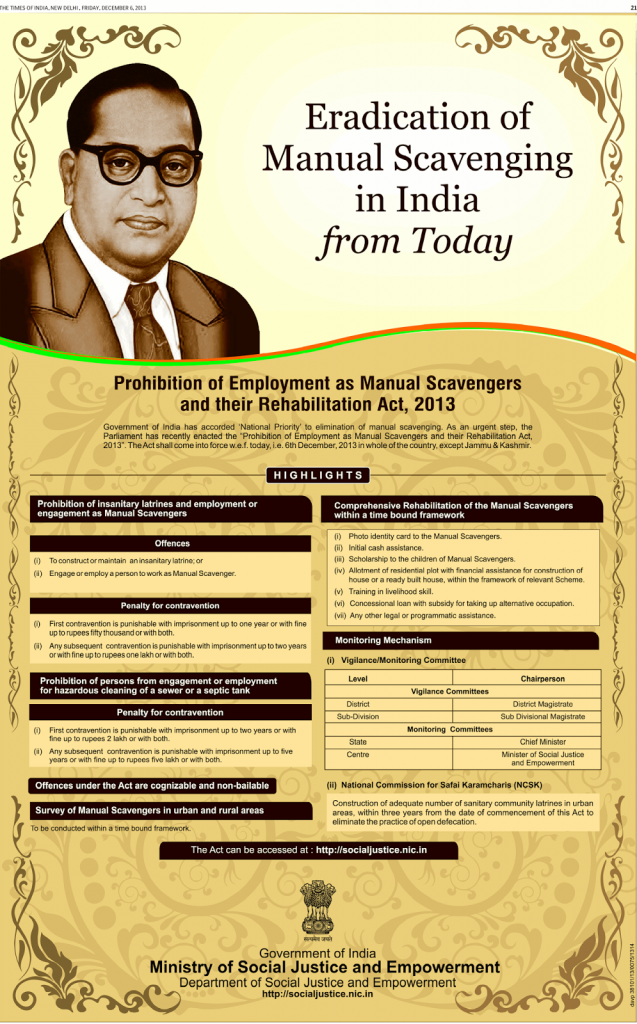
- Despite this, recurring episodes of human fatalities among those engaged in cleaning of septic tanks and sewers, typically belonging to the economically disadvantaged and marginalized communities of society, continue to be an issue of concern.
- The Challenge will focus extensively on creating citizen awareness on this critical issue along with infrastructure creation for mechanized cleaning and capacity building of workforce.
- The actual on-ground assessment of participating cities will be conducted in May 2021 by an independent agency and results of the same will be declared on 15 August 2021.
- The Cities will be awarded in three sub-categories – with population of more than 10 lakhs, 3-10 lakhs and upto 3 lakhs, with a total prize money of ₹52 crores to be given to winning cities across all categories.
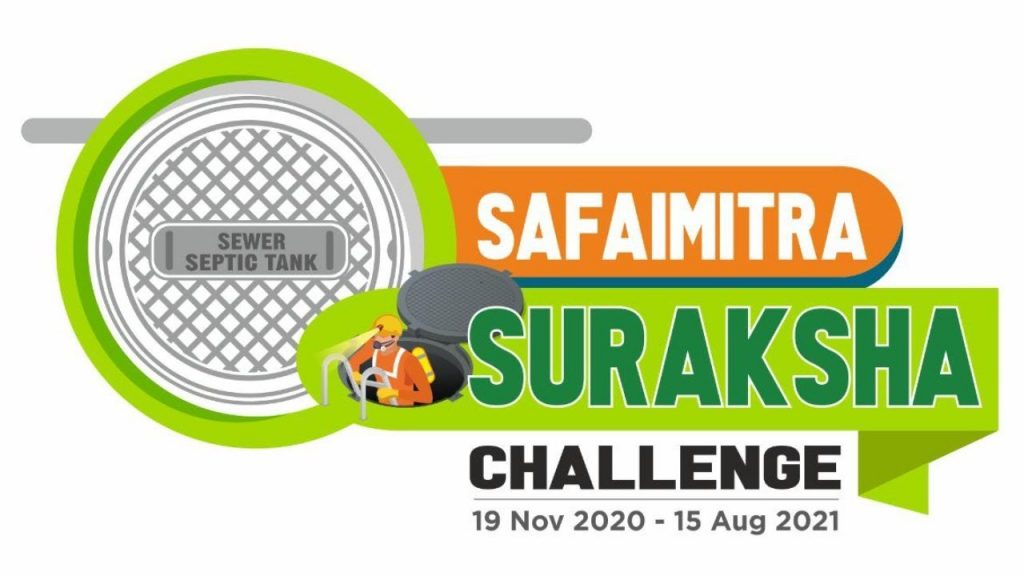
INPUT TAX CREDIT
Focus: GS 3;Indian Economy and issues relating to planning, mobilization, of resources, growth, development and employment.
Why in News?
The Arrest of a prominent Builder in a case of availment of fraudulent Input Tax Credit of Rs. 4.86 Crore on fake invoices
Please click on this and Refer 11th Nov PIB 2020 for detailed explanation of Input Tax Credit.
NEW DEVELOPMENT BANK (NDB)
Focus: GS 2;Bilateral, regional and global groupings and agreements involving India and/or affecting India’s interests.
Why in News?
Government of India & NDB Sign Agreement for USD 500 Million to Provide Fast, Reliable, Safe and Comfortable Public Transport System in The National Capital Region
About New Development Bank (NDB)
- The New Development Bank (NDB), formerly referred to as the BRICS Development Bank, is a multilateral development bank established by the BRICS states (Brazil, Russia, India, China and South Africa).


Above image attached of NDB Bank explained
INTERNATIONAL ENERGY AGENCY (IEA)
Focus: GS 2;Bilateral, regional and global groupings and agreements involving India and/or affecting India’s interests.
Why in News?
India has moved to the Centre stage of International Energy Affairs: International Energy Agency
About International Energy Agency (IEA)
- The International Energy Agency (IEA) is an autonomous organisation which works to ensure reliable, affordable and clean energy.
- It was established in the wake of 1973 (set up in 1974) oil crisis after the OPEC cartel had shocked the world with a steep increase in oil prices.
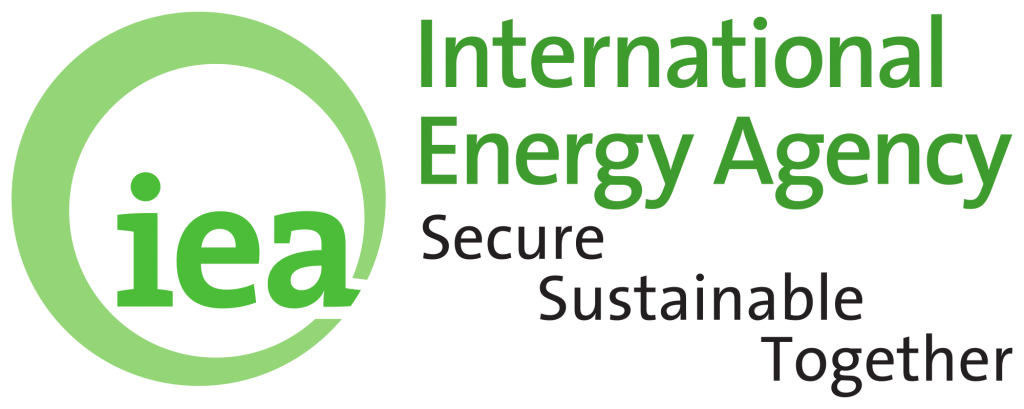
- It is headquartered in Paris, France.
- The World Energy Outlook Report is released by IEA annually.
- The India became an associate member of the International Energy Agency in 2017.
- The Mexico officially became the International Energy Agency’s 30th member country in February 2018, and its first member in Latin America.

CLAWS
Focus: GS 3; Challenges to internal security through communication networks, role of media and social networking sites in internal security challenges, basics of cyber security; money-laundering and its prevention.
Why in News?
The Army Chief Compliments Centre for Land Warfare Studies (CLAWS) on Completion of 15 Years of Excellence
About Chief Compliments Centre for Land Warfare Studies (CLAWS)
- The Centre for Land Warfare Studies (CLAWS), New DELHI, India is an autonomous think tank on strategic studies and land warfare.
- The mandate of CLAWS covers national security issues, conventional military operations and sub-conventional warfare.
- The CLAWS is registered under the Societies Registration Act, 1860 and is a membership-based organisation.

- It is governed by a Board of Governors and an Executive Council. Research at CLAWS is futuristic in outlook and policy-oriented in approach.
- CLAWS disseminate the products of its research to its members, members of the armed forces, decision makers, members of the strategic community and interested civilians. It also seeks to contribute to developing a pro-active strategic culture for India.
- The objective of the organization is to convey policy recommendations based on interactions, consensus and research projects to policymakers and experts. CLAWS has been ranked 67th amongst World Top Defence and National Security Think Tanks as per ‘2017 Global Go To Think Tank Report’ published by University of Pennsylvania, USA

LAND MANAGEMENT SYSTEM (LMS)
Focus: GS 3; Challenges to internal security through communication networks, role of media and social networking sites in internal security challenges, basics of cyber security; money-laundering and its prevention.
Why in News?
As part of efforts to improve overall management of defence land, for the first time a Land Management System (LMS) has been developed by Department of Defence in conjunction with DGDE and Armed forces.
About Land Management System (LMS) Portal
- The portal is expected to bring in greater speed, transparency and efficiency into the Land Management System (LMS) of the Department. With integration of GIS based tool, it will improve decision making process by removing duplication/unnecessary communication between various stakeholder groups involved in the decision-making process.
- The technical support for this GIS-based system has been provided by BISAG, India’s premier organization in GIS based informatics.

- The software, apart from capturing the textual details of all proposals relating to defence management, integrates these textual details with Raksha Bhoomi software as well as other relevant GIS-layers which include satellite imagery of the area, other amenities etc.
- The Intra-net portal shall digitize all requests of defence land management received by the Department in future. It is also in process of progressively capturing archival data into the system. All data for cases since 2016 have already been captured and are available in the portal. Progressively, data of prior period will also be entered in the portal which is meant only for departmental use and it is not open for the public.




